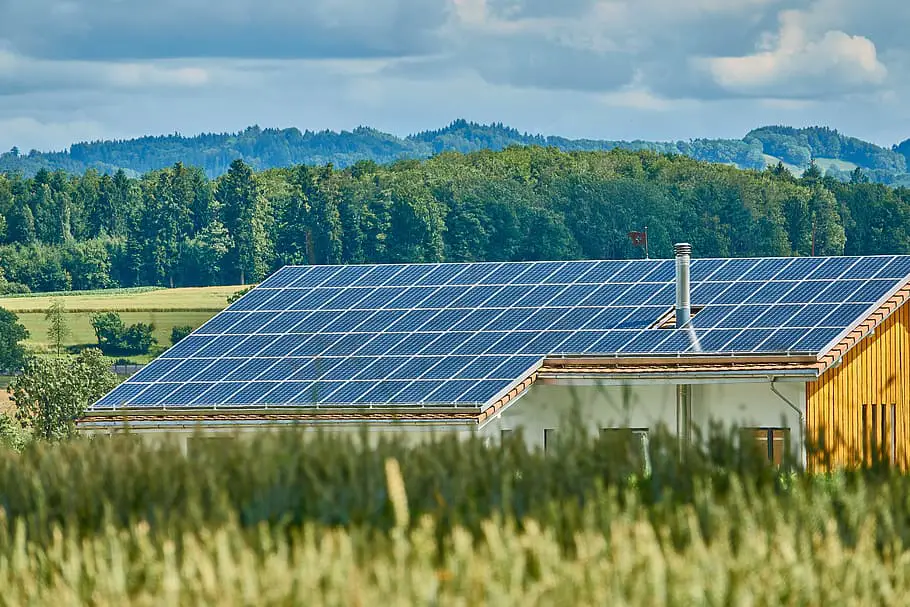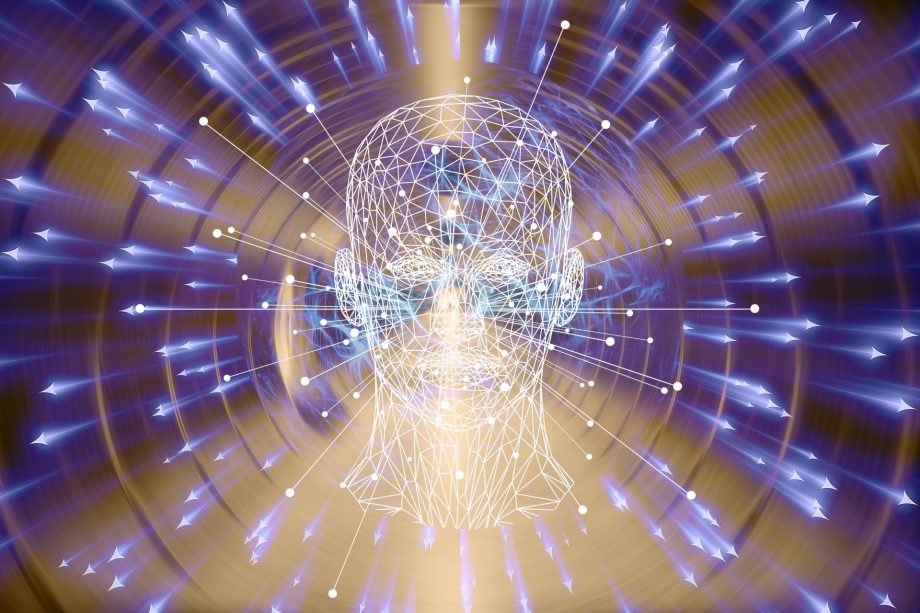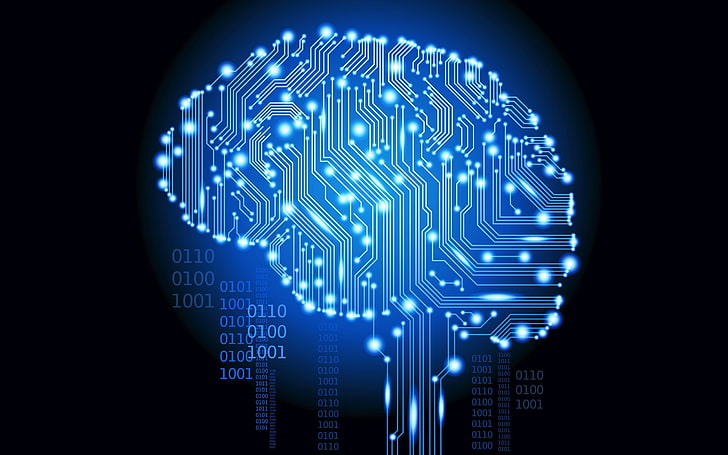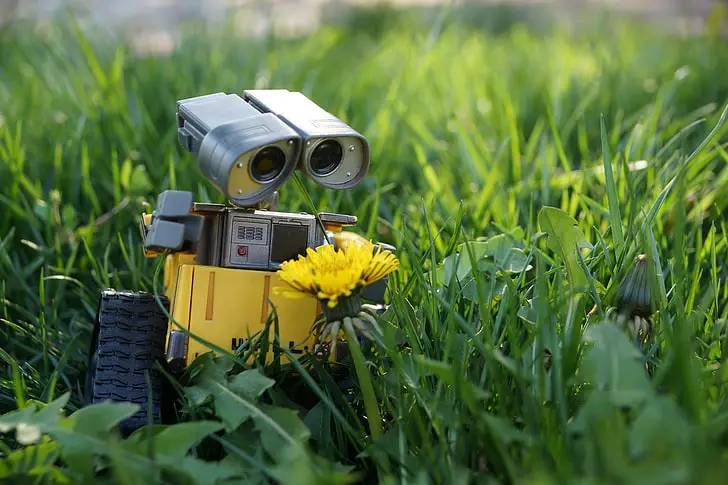
Explore the transformative impact of AI on renewable energy production. Discover how AI boosts efficiency, cuts costs, and shapes the future of renewable energy.
Imagine a world where renewable energy production is optimized to its fullest potential, where efficiency is the norm, and waste is a thing of the past.
This isn’t a far-off dream, but a rapidly approaching reality, thanks to the impact of AI on renewable energy production.
From solar farms to wind turbines, AI is revolutionizing the way we generate and consume energy, making renewable sources more viable and valuable than ever before.
So, let’s dive in and explore how AI is powering up the renewable energy sector, one algorithm at a time.
Impact of AI on Renewable Energy Production
Welcome to our journey exploring the fascinating intersection of artificial intelligence and renewable energy.
The impact of AI on renewable energy production is a topic that’s sparking interest worldwide and for good reason.
As we delve into this subject, we’ll be uncovering how AI is reshaping the landscape of renewable energy, from forecasting and efficiency to storage and distribution.
We’ll also be sharing intriguing case studies and discussing the benefits, challenges, and future prospects of AI in this field.
So, buckle up and get ready to discover how AI is not just a part of the renewable energy conversation, but a key player in driving its evolution.
Brief Overview of AI and Renewable Energy
Artificial Intelligence, or AI, has been making waves in various sectors, and renewable energy is no exception.
AI, with its ability to learn and adapt, is revolutionizing how we generate, distribute, and consume energy.
It’s all about smart systems that can analyze vast amounts of data, make predictions, and optimize processes.
Renewable energy, on the other hand, is our ticket to a sustainable future.
It’s all about harnessing power from natural resources like the sun, wind, and water resources that are, as the name suggests, renewable.
Now, when we bring AI into the renewable energy scene, that’s when things get really exciting.
The Intersection of AI and Renewable Energy
The intersection of AI and renewable energy is a hotbed of innovation.
AI is playing a crucial role in making renewable energy sources more efficient and reliable.
For instance, AI algorithms can predict the optimal time to generate energy based on weather patterns, thus maximizing output from solar and wind sources.
AI can also manage energy distribution, ensuring that power is efficiently delivered where it’s needed, when it’s needed.
This synergy between AI and renewable energy is not just about improving energy production.
It’s about creating a sustainable energy ecosystem that can meet our needs without compromising the ability of future generations to meet theirs.
It’s about using the power of AI to ensure that renewable energy can truly become our primary source of power.
The Role of AI in Renewable Energy
As we delve deeper into the role of AI in renewable energy, we find ourselves in a world where technology and nature work hand in hand.
AI is not just a bystander in the renewable energy sector; it’s an active participant, a game-changer.
It’s helping us harness the power of the sun, wind, and water more effectively than ever before.
But how exactly does it do that? Well, that’s what we’re going to explore in this section.
From energy forecasting to efficiency, and storage to distribution, we’ll see how AI is making its mark in each of these areas, transforming the way we produce and consume energy.
So, let’s embark on this journey and discover the incredible role of AI in renewable energy.
AI in Energy Forecasting
Energy forecasting is a critical aspect of renewable energy management.
It’s all about predicting how much energy will be produced at a given time, and this is where AI comes into play.
AI algorithms can analyze vast amounts of data, including weather patterns, historical energy production levels, and even the position of the sun or wind speed.
By doing so, they can predict energy production with remarkable accuracy.
This helps grid operators better manage the supply and demand of energy, reducing waste and ensuring that renewable energy sources are utilized to their full potential.
AI in Energy Efficiency
Next up, let’s talk about energy efficiency. AI is playing a key role in making renewable energy sources more efficient.
For instance, AI can optimize the operation of wind turbines by adjusting their alignment based on real-time wind speed and direction data.
Similarly, in solar energy systems, AI can adjust the angle of solar panels throughout the day to maximize sunlight absorption.
By optimizing these operations, AI helps to squeeze out every bit of energy from these renewable sources, making them even more efficient and cost-effective.
AI in Energy Storage and Distribution
Last but not least, AI is revolutionizing energy storage and distribution.
Energy storage is crucial for managing the intermittent nature of renewable energy sources.
AI can predict energy demand patterns and control energy storage systems to store excess energy produced during peak production times.
This stored energy can then be used when production is low, ensuring a consistent energy supply.
When it comes to distribution, AI can manage and control smart grids, and networks that use digital technology to coordinate the needs and capabilities of all generators, grid operators, end-users, and electricity market stakeholders.
AI can analyze real-time data from the grid to balance supply and demand, prevent power outages, and respond faster to grid disturbances.
This leads to a more reliable and resilient energy infrastructure.
In conclusion, AI is not just participating in the renewable energy sector; it’s leading the charge toward a more sustainable and efficient future.
From forecasting and efficiency to storage and distribution, AI is making renewable energy more viable and accessible than ever before.
Case Studies of AI in Renewable Energy
Alright, now that we’ve explored the roles AI plays in renewable energy, let’s dive into some real-world examples.
In this section, we’ll take a closer look at how AI has been successfully implemented in various renewable energy sectors.
From harnessing the power of the sun and wind to making the most of our water resources, AI is proving to be a game-changer.
So, buckle up as we embark on a journey through some fascinating case studies that showcase the transformative impact of AI on renewable energy production.
AI in Solar Energy
Let’s start with solar energy, a field where AI is making quite a splash.
By using machine learning algorithms, AI can optimize the operation of solar panels.
These algorithms analyze a multitude of factors such as weather patterns, the sun’s position, and panel orientation to maximize energy production.
Moreover, AI can predict solar energy generation based on weather forecasts, helping grid operators better manage the power supply.
AI in Wind Energy
Next, we have wind energy. AI is revolutionizing this sector by improving the efficiency of wind turbines.
Machine learning algorithms can analyze data from sensors on the turbines, such as wind speed and direction, to adjust the turbine’s blades and maximize energy output.
Furthermore, predictive maintenance powered by AI can detect potential issues before they become serious problems, reducing downtime and saving costs.
AI in Hydro Energy
Last but not least, let’s talk about hydro energy. AI plays a crucial role in managing and optimizing hydroelectric power plants.
By analyzing data like water flow, rainfall forecasts, and electricity demand, AI can determine the optimal time to generate power.
This not only maximizes energy production but also helps in preserving water resources.
AI can also predict equipment failures, allowing for timely maintenance and preventing costly breakdowns.
The Benefits of AI in Renewable Energy
As we delve deeper into our exploration of AI’s impact on renewable energy, it’s time to highlight the benefits that this powerful technology brings to the table.
From solar farms to wind turbines, AI is not just a silent spectator but a game-changer, enhancing efficiency, cutting costs, and bolstering reliability in the renewable energy sector.
So, let’s unpack these benefits and see how AI is shaping a brighter, more sustainable future for us all.
Increased Efficiency and Productivity
AI is like a master conductor, orchestrating a symphony of renewable energy sources to perform at their peak.
It optimizes the operation of solar panels, wind turbines, and hydro systems, ensuring they generate maximum power with minimum waste.
For instance, AI algorithms can predict wind patterns and adjust wind turbine blades to capture the most energy.
Similarly, they can determine the optimal angle for solar panels throughout the day.
This heightened efficiency leads to a significant boost in productivity, making renewable energy a more viable and competitive option.
Cost Reduction
The beauty of AI lies in its ability to learn and improve over time, which translates into cost savings in the long run.
By predicting maintenance needs, AI can prevent costly equipment failures and downtime in renewable energy facilities.
Moreover, AI’s ability to forecast energy production based on weather patterns allows for better grid management, reducing the costs associated with energy storage and distribution.
In essence, AI is the savvy financial advisor of the renewable energy world, finding ways to cut costs and increase returns on investment.
Enhanced Reliability and Security
AI doesn’t just work hard; it works smart. It uses data to make renewable energy sources more reliable.
For example, AI can analyze weather forecasts, historical data, and real-time equipment performance to predict energy output accurately.
This means we can rely on renewable energy to meet demand, even when the sun isn’t shining or the wind isn’t blowing.
Furthermore, AI plays a crucial role in securing the energy grid from physical and cyber threats, ensuring a steady and safe supply of green power.
So, with AI at the helm, renewable energy is not only a sustainable choice but also a reliable and secure one.
Challenges and Solutions in Implementing AI in Renewable Energy
As we embark on this exciting journey of intertwining AI with renewable energy, it’s important to acknowledge the roadblocks we might encounter along the way.
But don’t worry, every challenge presents an opportunity for innovation.
In this section, we’ll delve into some of the hurdles in implementing AI in renewable energy, such as data privacy concerns, the need for substantial initial investment, and the demand for skilled professionals.
But hang tight, because we’ll also explore the ingenious solutions that are emerging to tackle these issues.
Let’s dive in and see how we can turn these challenges into stepping stones toward a greener and smarter future.
Data Privacy and Security
As we begin to rely more heavily on AI for managing our renewable energy systems, we inevitably find ourselves dealing with an enormous amount of data.
This data, while incredibly valuable for improving efficiency and predicting energy trends, also raises concerns about privacy and security.
After all, we’re talking about information that could potentially reveal intimate details about our energy usage patterns.
The challenge here is to ensure that this data is protected and used responsibly.
This involves implementing robust security measures and clear data usage policies, as well as educating users about their data rights.
High Initial Investment
There’s no denying it, integrating AI into renewable energy systems requires a significant upfront investment.
This can be a daunting prospect, especially for smaller companies or developing countries.
The cost of AI software, hardware, and the infrastructure needed to support it can add up quickly.
However, it’s important to view this as an investment in the future.
Over time, the efficiencies gained from AI can lead to substantial cost savings, making it a worthwhile expenditure in the long run.
Need for Skilled Professionals
The successful implementation of AI in renewable energy is not just about the technology itself, but also about the people who design, manage, and maintain it.
There’s a growing demand for professionals who possess the unique blend of skills needed to navigate this intersection of AI and renewable energy.
This includes not only technical skills, such as data analysis and machine learning but also a deep understanding of the renewable energy sector.
The challenge here is to foster education and training programs that can produce such professionals.
But with the growing interest in both AI and renewable energy, we’re seeing more and more people eager to build careers in this exciting field.
The Future of AI in Renewable Energy
As we look ahead, it’s clear that AI is set to play an even bigger role in the world of renewable energy.
It’s like we’re standing at the edge of a new frontier, eager to explore the possibilities that lie ahead.
From predictive maintenance of energy infrastructure to the development of smart grids and autonomous energy systems, AI is poised to revolutionize the way we generate, distribute, and consume energy.
But what does this mean for us? How will these advancements change our lives?
Let’s delve into these questions and more as we explore the future of AI in renewable energy.
Predictive Maintenance
Predictive maintenance is like having a crystal ball for your energy infrastructure.
It’s all about using AI to anticipate and address issues before they become problems.
Imagine wind turbines that can predict when they’ll need a repair, or solar panels that can optimize their own cleaning schedules for maximum efficiency.
This isn’t just about saving time and money, it’s about ensuring that our renewable energy sources are always operating at their best.
Smart Grids
Next up, let’s talk about smart grids. These are electricity networks that use digital technology to better manage the flow of energy.
With AI, these grids can become even smarter, adjusting to changes in energy supply and demand in real-time.
This means less energy waste, more reliability, and even the potential for lower energy costs.
It’s like having a super-intelligent conductor for the symphony of energy that powers our lives.
Autonomous Energy Systems
Finally, we have autonomous energy systems. These are systems that can operate independently, making decisions and adjustments without human intervention.
With AI, we could have solar farms that adjust their panels to catch the most sunlight, or wind farms that change the orientation of their turbines to capture the most wind.
These systems could even communicate with each other, coordinating their efforts to maximize energy production.
It’s a future where our energy systems work together seamlessly, powered by the intelligence of AI.
Impact of AI on Renewable Energy Production FAQs
Let’s dive into some of the most frequently asked questions about AI and renewable energy.
These questions often pop up when discussing this topic, and they offer a great opportunity to clarify some common misconceptions and provide deeper insights.
So, whether you’re a seasoned expert or a curious beginner, stick around as we explore these intriguing queries together.
Q: How does AI affect renewable energy?
A: AI significantly influences renewable energy by optimizing energy production, predicting energy demand, and improving energy storage.
It uses predictive analytics to forecast the best times to generate energy from renewable sources like wind and solar, thus maximizing efficiency and reducing waste.
Q: How is AI helping renewable energy?
A: AI is a game-changer for renewable energy in several ways. It enhances energy efficiency by optimizing the operation of renewable energy systems.
For instance, AI can adjust the angle of solar panels throughout the day to capture maximum sunlight or alter the orientation of wind turbines to harness more wind.
Furthermore, AI helps in the predictive maintenance of these systems, reducing downtime and increasing their lifespan.
Q: How does AI impact the energy industry?
A: AI is revolutionizing the energy industry by making it smarter and more efficient.
It’s being used for energy forecasting, managing energy distribution, and improving energy storage.
AI also plays a significant role in smart grids, enabling real-time adjustments based on energy demand and supply.
Moreover, AI aids in detecting and responding to outages faster, enhancing the reliability of energy supply.
Q: What is the future of AI in renewable energy?
A: The future of AI in renewable energy looks promising. We can expect advancements in AI to lead to more efficient renewable energy systems, smarter grids, and more effective energy storage solutions.
AI will also play a crucial role in developing autonomous energy systems that can operate and adapt without human intervention.
As AI continues to evolve, it will undoubtedly unlock new possibilities for renewable energy.
Impact of AI on Renewable Energy Production Conclusion
As we wrap up our exploration of AI’s impact on renewable energy production, it’s clear that we’re standing at the intersection of two powerful forces shaping our future.
The fusion of artificial intelligence with renewable energy is not just a fascinating concept, but a reality that’s transforming our world.
From enhancing energy efficiency to predicting energy demand, AI is playing a pivotal role in the renewable energy sector.
But remember, this is just the beginning. As we continue to innovate and push the boundaries of what’s possible, the role of AI in renewable energy will only grow, leading us toward a more sustainable and efficient future.
So, let’s keep the conversation going and continue to explore and understand this exciting synergy of technology and sustainability.
Impact of AI on Renewable Energy Production A Recap
As we conclude our discussion on the impact of AI on renewable energy production, let’s recap the key points we’ve explored.
We started by providing a brief overview of AI and its intersection with renewable energy.
We then delved into the role of AI in renewable energy, highlighting its applications in energy forecasting, efficiency, and storage.
We also examined case studies that showcased how AI is being utilized in solar, wind, and hydro energy systems.
Moving on, we explored the benefits of AI in renewable energy, including increased efficiency and productivity, cost reduction, and enhanced reliability and security.
We acknowledged that implementing AI in renewable energy does come with challenges, such as data privacy and security concerns, high initial investment requirements, and the need for skilled professionals.
However, we also discussed potential solutions to address these challenges.
Finally, we looked into the future of AI in renewable energy, envisioning exciting possibilities such as predictive maintenance, smart grids, and autonomous energy systems.
Some Final Thoughts
The potential impact of AI on the future of renewable energy is immense.
With the continuous advancements in AI technology, we can expect to see significant transformations in the way we generate, distribute, and consume renewable energy.
AI’s ability to optimize energy systems, improve efficiency, and make accurate predictions can lead to a more sustainable and resilient energy infrastructure.
It has the potential to revolutionize energy management, enabling smarter decision-making and reducing our carbon footprint.
As we harness the power of AI in renewable energy, we can create a future where clean and affordable energy is readily available, mitigating the environmental challenges we face.
The synergy between AI and renewable energy holds great promise, and with further research, innovation, and collaboration, we can unlock its full potential and pave the way for a greener and more sustainable world.







